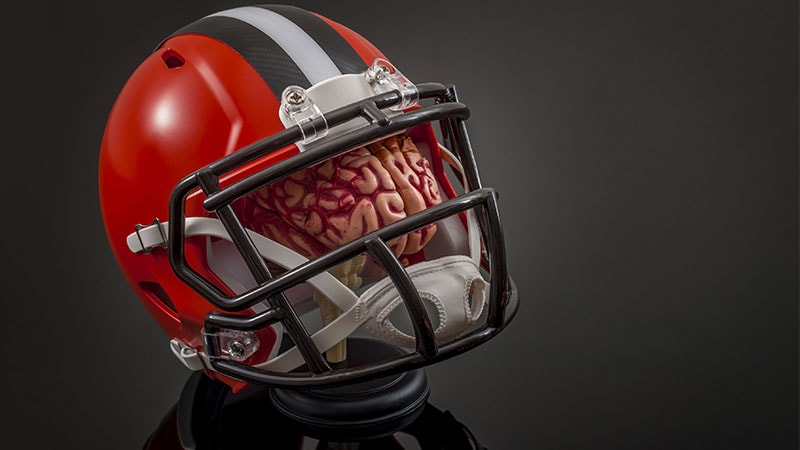CTE Prevalence in Young Athletes Revealed in Largest Brain Donor Study
Core Concepts
Young athletes, even at the amateur level, are at risk of developing CTE due to repetitive head impacts.
Abstract
The study on chronic traumatic encephalopathy (CTE) in young athletes reveals alarming statistics and implications for amateur sports participants.
Key Highlights:
- 41% of young athletes studied had CTE, with most having a mild form of the disease.
- Brain tissue analysis showed shrinkage and microscopic changes indicating a breach of the blood-brain barrier.
- The study identified the first American female athlete with CTE.
- Most athletes with CTE played at the amateur level in youth, high school, or college sports.
- The study emphasizes the importance of recognizing symptoms and providing proper care for young athletes.
Customize Summary
Rewrite with AI
Generate Citations
Translate Source
To Another Language
Generate MindMap
from source content
Visit Source
www.medscape.com
CTE Common Among Young Athletes in Largest Brain Donor Study
Stats
"41% had the neurodegenerative disease, caused by repetitive head impacts (RHIs)."
"Donors died between the ages of 13 and 29 years, 92.8% were male and 73% were White."
"More than 95% had mild CTE."
"71.4% played amateur sports, including football (60.9%), soccer (17.2%), hockey (7.8%), and wrestling (7%)."
Quotes
"A lot of people think CTE is a result of high-level, professional play such as football, ice hockey, and boxing, but it can affect amateur athletes and can affect people at a young age." - Dr. Ann McKee
Key Insights Distilled From
by Kelli Whitlo... at www.medscape.com 08-28-2023
https://www.medscape.com/viewarticle/995923
Deeper Inquiries
How can the findings of this study impact the safety measures in place for young athletes in contact sports?
The findings of this study can have significant implications for the safety measures implemented for young athletes in contact sports. With 41% of young athletes in the study showing evidence of CTE, it underscores the importance of early detection and prevention strategies. This could lead to a reevaluation of current safety protocols, including stricter guidelines on the frequency and intensity of head impacts allowed during practices and games. Coaches, parents, and sports organizations may need to prioritize education on the risks of repetitive head impacts and the importance of reporting symptoms of concussions promptly. Additionally, there may be a push for improved equipment design and technology to better protect athletes from RHIs.
What are the potential implications for the future of amateur sports participation given the prevalence of CTE in young athletes?
The prevalence of CTE in young athletes, as highlighted in this study, could have profound implications for the future of amateur sports participation. Parents may become more hesitant to allow their children to participate in contact sports due to concerns about the long-term consequences of RHIs. Sports organizations may face increased pressure to prioritize player safety and implement stricter guidelines to minimize the risk of head injuries. This could potentially lead to a shift in the types of sports that young athletes choose to participate in, with non-contact sports becoming more popular. There may also be a greater emphasis on alternative forms of physical activity that carry lower risks of head trauma.
How can the medical community work towards early detection and prevention strategies for CTE in young athletes?
The medical community can take several steps to work towards early detection and prevention strategies for CTE in young athletes. Firstly, there needs to be increased awareness among healthcare providers, coaches, parents, and athletes about the signs and symptoms of concussions and the potential long-term consequences of RHIs. Regular screenings and cognitive assessments for young athletes engaged in contact sports could help in identifying early warning signs of CTE. Research into biomarkers that indicate the presence of CTE could also aid in early detection. Additionally, promoting a culture of reporting head injuries and ensuring that athletes receive proper medical evaluation and treatment after a concussion is crucial. Collaborative efforts between neurologists, sports medicine physicians, and researchers can lead to the development of targeted prevention strategies, such as rule changes in sports, improved protective equipment, and educational programs on safe play practices.
0
